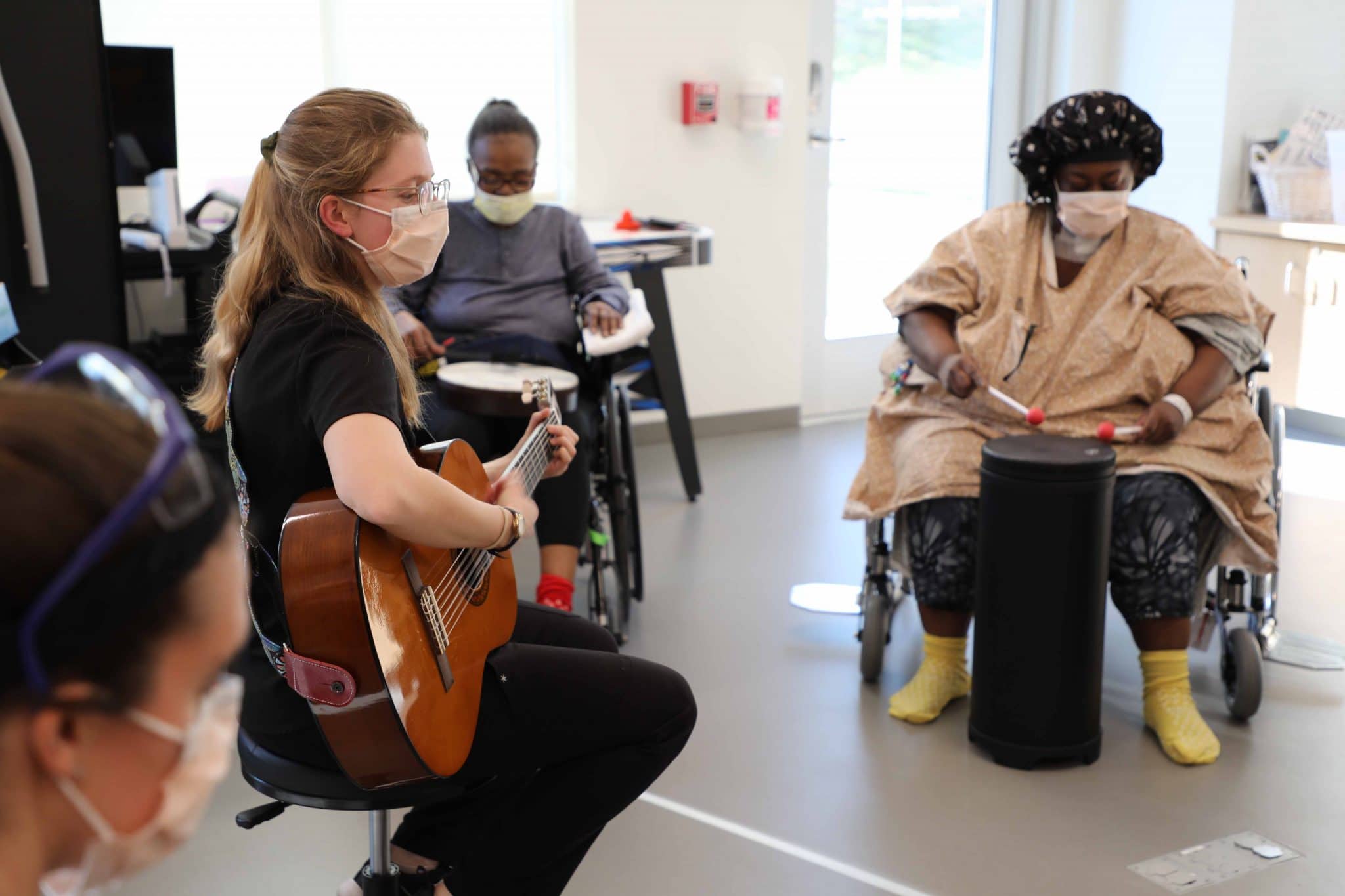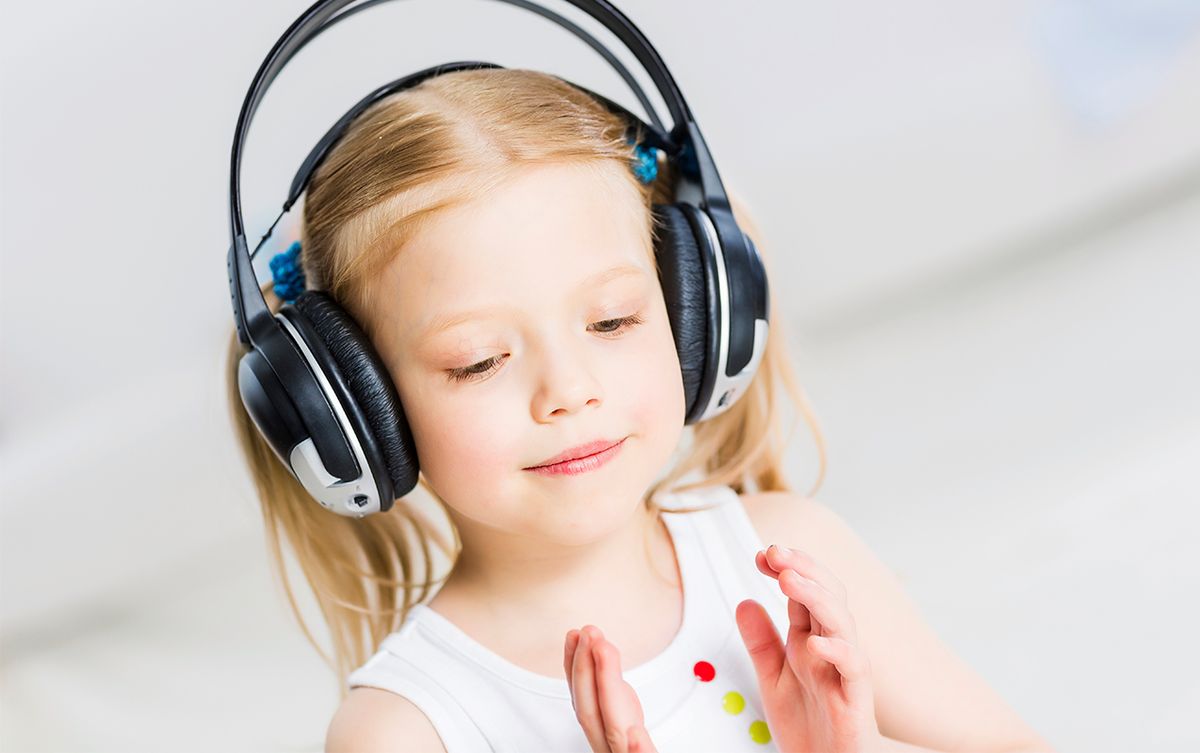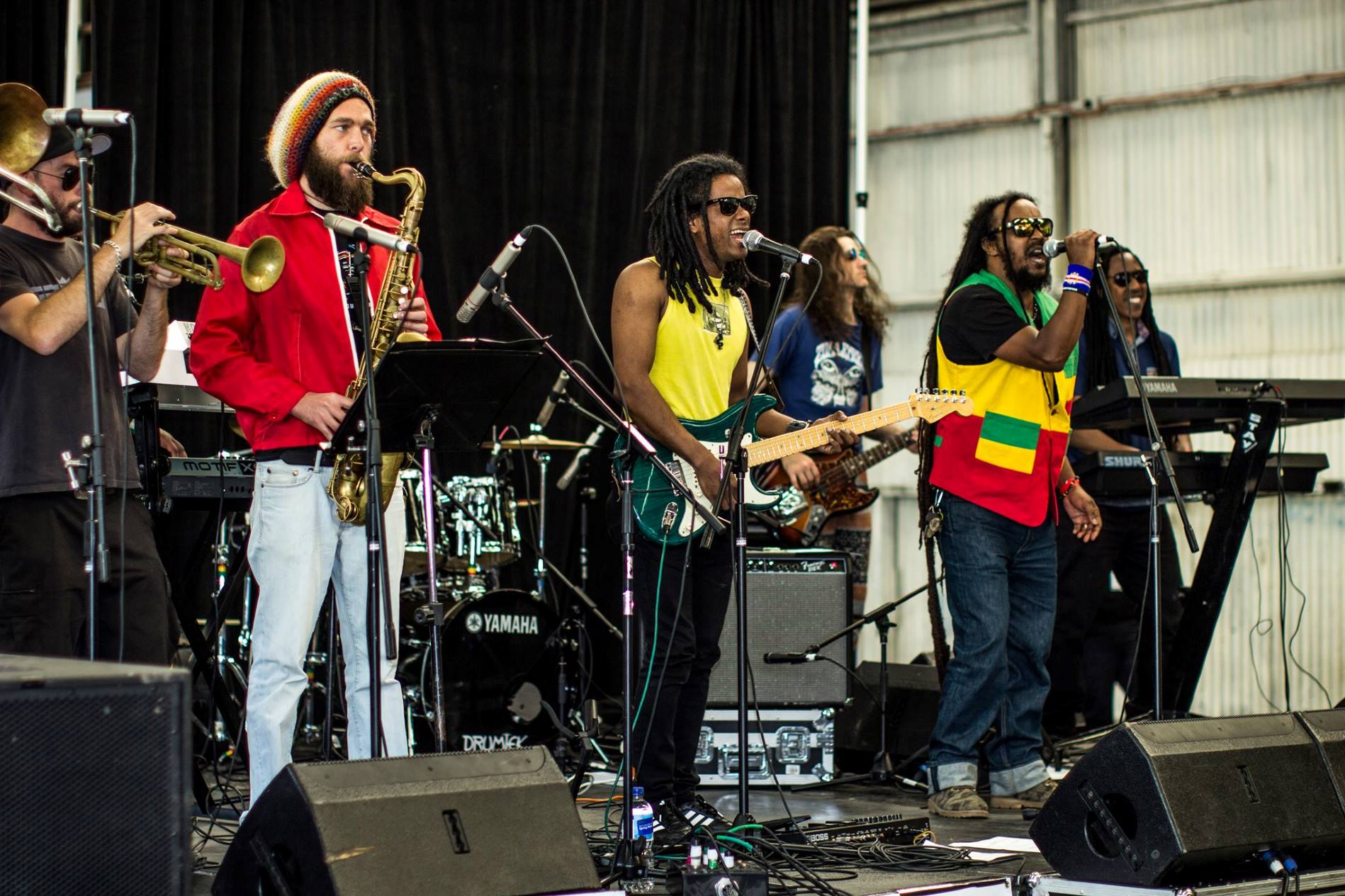Home>Events & Info>Music Therapy>Where Was Music Therapy First Developed


Music Therapy
Where Was Music Therapy First Developed
Published: February 1, 2024
Discover the origins of music therapy and its development throughout history. Learn where this transformative practice was first created, impacting countless lives through the power of music.
(Many of the links in this article redirect to a specific reviewed product. Your purchase of these products through affiliate links helps to generate commission for AudioLover.com, at no extra cost. Learn more)
Table of Contents
Introduction
Music has been an integral part of human culture and society for thousands of years. Its power to evoke emotions, uplift spirits, and promote healing has long been recognized and utilized in various forms of therapy. Music therapy, as a modern discipline, traces its roots back to ancient civilizations that understood and harnessed the therapeutic potential of music.
In this article, we will delve into the ancient origins of music therapy and explore its development in different regions of the world. From ancient Egypt and India to Greece and China, and even pre-Columbian America, music therapy has a rich and diverse history spanning across continents and centuries.
By understanding the early beginnings of music therapy, we can appreciate the time-honored practice that has evolved into the evidence-based profession it is today. Join us on this journey through time as we discover the ancient roots of music therapy and how it has contributed to the well-being of individuals and communities throughout history.
Ancient Origins of Music Therapy
The origins of music therapy can be traced back to ancient civilizations, where the power of music to heal and restore balance was recognized and utilized. These early cultures understood that music had a profound impact on the human mind, body, and spirit, and they used it as a therapeutic tool in various healing practices.
Ancient societies believed that music had the ability to connect individuals with the divine and access higher states of consciousness. It was believed that through the harmonious vibrations of music, individuals could be healed physically, emotionally, and spiritually.
While the exact practices and techniques used in ancient music therapy varied across different cultures, the underlying principle was the same: music has the power to influence and transform a person’s well-being.
Let’s explore some of the ancient civilizations and their contributions to the development of music therapy:
- Ancient Egypt: In ancient Egypt, music played a significant role in religious and healing rituals. The Egyptians believed that music had the power to balance the mind, body, and soul. They used specific scales and melodies known as “magical music” to invoke healing energies and treat various ailments.
- Ancient India: In ancient India, music was considered a form of meditation and spiritual practice. The ancient Indian raga system, with its specific melodies and rhythms, was believed to have therapeutic effects on the listener. Ayurvedic texts also mention the use of music in healing, with specific ragas prescribed for different physical and emotional imbalances.
- Ancient Greece: The ancient Greeks had a deep appreciation for music and its healing properties. The philosopher Pythagoras believed that music had a direct influence on harmonizing the human body and soul. The healing power of music was further explored by the famous physician Hippocrates, who used music to treat patients suffering from mental and physical ailments.
- Ancient China: Music therapy was also practiced in ancient China, where it was seen as a means to harmonize the five elements and promote the flow of vital energy (Qi) throughout the body. The Chinese believed that specific musical tones and rhythms had the power to restore balance and heal illnesses.
These ancient civilizations laid the foundation for the development of music therapy, setting the stage for its evolution and integration into various cultures around the world. As we continue our journey, we will explore the specific practices and contributions of each culture in more detail.
Music Therapy in Ancient Egypt
Ancient Egypt is known for its rich culture and deep understanding of the healing properties of music. The Egyptians believed that music had the power to align the mind, body, and spirit, and they incorporated music into their religious and healing practices.
In ancient Egyptian society, music played a pivotal role in both sacred rituals and everyday life. It was believed that certain melodies and scales, known as “magical music” or “healing music,” possessed specific vibrations that could restore balance and promote healing.
Music therapy in ancient Egypt was practiced by priests or healers who were well-versed in the art of sound. They used various instruments, such as harps, lyres, flutes, and percussion, to create therapeutic melodies that were tailored to specific ailments or imbalances.
The ancient Egyptians believed that the vibrations produced by these musical instruments could influence the flow of life energy, known as “ka,” within the body. By playing specific melodies and chants, the healers aimed to stimulate the body’s innate healing abilities and restore harmony.
One of the most famous examples of music therapy in ancient Egypt is the “Hymn to the Nile,” a musical composition that expressed gratitude and reverence for the life-giving properties of the Nile River. This hymn was believed to have both healing and rejuvenating effects on those who listened to it.
Apart from religious ceremonies and healing rituals, music was also used therapeutically in daily life. It was believed that listening to music, singing, or playing instruments could alleviate stress, improve mood, and enhance overall well-being.
Ancient Egyptian medical texts, such as the “Ebers Papyrus,” also document the use of music in specific healing treatments. For example, it is mentioned that certain musical melodies were used to relieve pain, while others were associated with promoting sleep or reducing anxiety.
Overall, music therapy in ancient Egypt was deeply ingrained in their culture and spirituality. The Egyptians recognized the power of music to heal, uplift, and connect with divine energies. Their understanding of the therapeutic benefits of music laid the groundwork for the development of music therapy in cultures that followed.
Music Therapy in Ancient India
In ancient India, music was regarded as a powerful therapeutic tool that could deeply affect the mind, body, and spirit. The ancient Indian civilization recognized the profound nature of sound vibrations and developed a sophisticated system of music therapy rooted in spiritual and medicinal traditions.
Music therapy in ancient India was deeply intertwined with the practice of yoga and meditation. The ancient Indian raga system, which classified specific melodic scales and patterns, was believed to have therapeutic effects on the listener. Each raga was associated with specific emotions and had the potential to evoke profound healing experiences.
Ancient Indian treatises on music, such as the Natya Shastra and Samaveda, consider music as a form of medicine that can cure various physical and psychological ailments. These texts prescribe specific ragas, or musical modes, for therapeutic purposes, depending on the individual’s needs.
The ancient Indian medical system, Ayurveda, also incorporated music therapy as a modality for healing. Ayurvedic texts mention the use of specific ragas to balance the doshas, which are the fundamental energies governing the body. For instance, the raga Bhairavi was believed to calm the mind and alleviate stress, while the raga Todi was associated with promoting digestion and relieving digestive disorders.
Music therapy in ancient India was not restricted to passive listening. It also involved active participation, such as singing, playing instruments, and chanting mantras. Chanting Sanskrit mantras, with their specific sound vibrations, was believed to purify the mind, resonate with the body’s energy centers, and promote healing.
Music therapy was practiced by skilled musicians and healers, who understood the therapeutic properties of different ragas and rhythms. These experts would tailor the music to the specific needs of individuals, considering their physical, emotional, and energetic imbalances.
Music therapy was not limited to clinical settings in ancient India. It was also integrated into daily life and social ceremonies. Music was believed to create a harmonious and uplifting environment, promoting overall well-being and fostering a sense of community.
Ancient Indian music therapy continues to be practiced today, with traditional healing practices like Nada Yoga and sound meditation still being used to promote wellness and balance. The ancient wisdom of music therapy in India has left a lasting legacy, influencing modern therapeutic approaches and highlighting the power of music to heal and transform.
Music Therapy in Ancient Greece
Ancient Greece, known for its rich philosophical and cultural heritage, also recognized the healing power of music. In ancient Greek society, music therapy was highly valued and integrated into various aspects of life, including religious ceremonies, education, and healthcare.
The philosopher Pythagoras, considered the father of music therapy, believed in the intrinsic connection between music and the human soul. He developed the concept of the “music of the spheres,” which proposed that the harmonious movement of the celestial bodies created a heavenly music that resonated with the human soul.
Ancient Greek healers, such as Asclepiades and Hippocrates, also acknowledged the therapeutic potential of music. Hippocrates, often referred to as the “father of medicine,” used music as a form of treatment for various physical and mental ailments. He believed that music could restore balance to the body and promote healing.
Music therapy in ancient Greece was closely associated with the concept of ethos, which referred to the emotional and psychological effect of different musical modes and rhythms. The Greeks believed that specific modes, known as “tonoi,” could evoke specific emotions and alter the individual’s state of mind.
The ancient Greeks used various musical instruments, such as lyres, flutes, and drums, along with vocal chants and hymns, to create therapeutic melodies. The music was performed by skilled musicians and healers who understood the therapeutic properties of different tonoi and their impact on the human psyche.
Ancient Greek music therapy was not limited to passive listening; it also included active participation. Musicians and healers would encourage patients to actively engage in singing, dancing, and playing instruments as part of the therapeutic process.
The role of music therapy extended beyond individual healing to communal well-being. In ancient Greece, music was used to cultivate a sense of unity and harmony within society. Musical performances and festivals were held as a way to promote social cohesion and foster a shared cultural identity.
Ancient Greek music therapy had a significant influence on the development of Western music theory and therapy. The concepts of tonality, melody, and rhythm that emerged during this time continue to shape music therapy practices today, emphasizing the profound impact of music on emotions, cognition, and overall well-being.
Music Therapy in Ancient China
Music therapy has a long-standing history in ancient Chinese culture, where it was seen as a powerful tool for promoting harmony and balance within the body and the surrounding environment. Ancient Chinese philosophers and healers believed that music had the ability to affect the flow of vital energy, or Qi, and enhance overall well-being.
In ancient China, music therapy was deeply rooted in the belief that humans are interconnected with the natural world. The Chinese recognized the close relationship between music, nature, and the human body. They believed that by aligning with the rhythms and harmony of nature through music, individuals could achieve an optimum state of health and vitality.
Ancient Chinese music therapy involved the use of specific musical scales, known as “gong modes,” that were believed to activate specific energy centers in the body. These modes were associated with the five elements of nature—wood, fire, earth, metal, and water—and were thought to balance these elemental energies, promoting physical and emotional well-being.
Chinese healers used various musical instruments, such as bamboo flutes, zithers, and bells, to create therapeutic melodies and rhythms. The sounds produced by these instruments were believed to resonate with the body’s energy meridians and help remove blockages that caused physical or emotional imbalances.
In addition to instrumental music, vocal techniques such as singing, chanting, and reciting mantras were also utilized in music therapy. These vocal sounds were believed to have a direct impact on the energetic pathways of the body and facilitate healing.
Ancient Chinese medical texts, such as the Huangdi Neijing (Yellow Emperor’s Inner Canon), also emphasized the use of music in healing. These texts outlined the specific therapeutic effects of different musical modes and instruments for various health conditions.
Music therapy in ancient China was not limited to individual healing but also extended to communities and society as a whole. Musical performances and rituals were held to restore the balance of Qi in the environment and promote social harmony.
The ancient Chinese approach to music therapy influenced the development of traditional Chinese medicine and the practices of qigong and tai chi. These health systems continue to incorporate music and sound as important components of therapy, highlighting the enduring impact of ancient Chinese music therapy on holistic well-being.
Music Therapy in Pre-Columbian America
Pre-Columbian America, encompassing the diverse civilizations of the Aztecs, Mayans, and Incas, had a rich tradition of utilizing music for healing and spiritual purposes. Music therapy played an integral role in the cultural and religious practices of these civilizations, where music was believed to connect humans to the divine and foster well-being.
The Mayan civilization, for example, considered music as a means to communicate with various supernatural beings. Mayan healers, known as “ahmen,” used music to induce trance-like states and facilitate spiritual healing. They believed that specific rhythms, melodies, and chants could invoke celestial powers and influence the body and mind.
Similarly, the Aztecs believed that music had the power to connect with the gods and influence the natural forces governing human life. They used music in healing rituals, combining it with herbs and other therapeutic practices. Musical instruments such as rattles, drums, and flutes were utilized to create rhythmic patterns believed to have therapeutic effects.
Incan culture also incorporated music therapy as part of their healing traditions. The Incas believed that music had the ability to harmonize the body’s energy fields and bring balance to the individual. Shamans and healers used various wind, percussion, and string instruments, along with vocal chants, to evoke healing vibrations.
Pre-Columbian music therapy was deeply intertwined with the ceremonial and ritualistic practices of these civilizations. Music was employed in religious ceremonies, fertility rites, and initiation rituals. It was believed that the vibrations and rhythms of the music could create a sacred space, allowing individuals to connect with higher realms and experience healing.
Collaborative music-making and communal participation were common in pre-Columbian music therapy. The entire community would engage in dances, songs, and music-making as a way to foster unity, express emotions, and promote overall well-being.
Although much of the knowledge and practices of pre-Columbian music therapy have been lost with the colonization of the Americas, some traditional indigenous communities continue to preserve and revitalize these healing traditions. These ancient practices highlight the deep connection between music, spirituality, and healing in the cultures of pre-Columbian America.
Music Therapy in Medieval Europe
Medieval Europe saw the continuation and expansion of music’s healing role as it intersected with religious and medical practices. Music therapy during this period was deeply rooted in the belief that music had the power to influence the body, mind, and spirit, and bring about healing and restoration.
The Christian Church played a significant role in the development of music therapy during the medieval period. Monks and religious orders used specific chants and hymns, such as Gregorian chants, to create a calming and meditative atmosphere. This musical worship was believed to have healing properties, helping individuals connect with the divine and find solace.
Medieval hospitals and medical institutions also recognized the therapeutic benefits of music. Music was used as a part of holistic healing practices, alongside herbal remedies and physical treatments. It was believed that melodic music could soothe the mind, alleviate pain, and create an environment conducive to healing.
The practice of musical modes and scales, similar to ancient Greece, was also prevalent during medieval times. Musical modes were associated with specific emotions, each believed to have a different effect on the listener. Physicians and musicians utilized these modes to create customized therapeutic melodies based on the patient’s condition and need.
Music therapy in medieval Europe was not limited to passive listening. Active participation was encouraged, with patients engaging in singing, dancing, and playing instruments as part of their therapeutic journey. Music was seen as a means of emotional expression, releasing pent-up feelings and promoting catharsis.
The rise of troubadours and minstrels further popularized the use of music as a form of therapy. These wandering musicians entertained and uplifted audiences with ballads and songs, bringing joy and emotional release to the listeners. Troubadours were often called upon to perform for the ill and the mentally distressed to uplift their spirits and promote a sense of well-being.
Medieval Europe witnessed the onset of music therapy being institutionalized within monastic orders and medical institutions. Treatises, such as Hildegard von Bingen’s “Physica,” provided guidelines for using specific musical modes and rhythms for therapeutic purposes.
While the specific practices and techniques of music therapy have evolved over time, the foundation laid in medieval Europe has left a lasting impact. Music therapy continues to be recognized today as a valuable and effective modality for promoting healing, well-being, and emotional expression.
Conclusion
Music therapy has a rich and diverse history that spans across ancient civilizations and cultures. From ancient Egypt and India to Greece, China, and pre-Columbian America, music has been utilized as a therapeutic tool for healing, spiritual connection, and overall well-being.
Throughout the ages, humanity has recognized the profound impact that music can have on the mind, body, and spirit. These early civilizations understood the power of sound vibrations to restore balance, promote healing, and connect individuals with higher realms of consciousness.
In ancient Egypt, music therapy was deeply ingrained in their religious and healing practices, with specific melodies and chants believed to invoke healing energies and restore harmony.
Ancient India developed a sophisticated system of music therapy, using specific ragas and vocal techniques to harmonize the doshas and promote overall wellness.
In ancient Greece, music therapy was intertwined with philosophy and medicine, with theories on tonality and rhythms influencing the therapeutic approach.
Ancient China recognized the connection between music, nature, and the human body, using specific musical scales and instruments to balance energies and enhance well-being.
Pre-Columbian America saw music therapy integrated into ceremonial and communal practices, connecting individuals to the divine and fostering unity.
Medieval Europe witnessed music therapy being embraced by religious institutions and medical establishments, where music was believed to soothe the soul, relieve pain, and promote healing.
The ancient practices and knowledge of music therapy have influenced modern approaches, shaping the development of evidence-based music therapy as a recognized profession. Today, music therapy is utilized across diverse settings, including healthcare facilities, schools, and community centers, to support individuals in improving their physical, psychological, and emotional well-being.
As we reflect on the ancient origins of music therapy, we acknowledge the enduring impact that music has on humanity. Music has the ability to transcend language and cultural barriers, providing a universal language that can heal, inspire, and uplift. It serves as a reminder of the deep connection between music, wellness, and the human experience.











